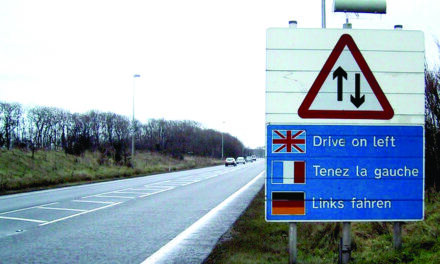
“…if ice sank to the bottom as it formed, the polar oceans would look very different from the icy continents they are.”
About 71 percent of the Earth’s surface is covered by water and it makes up, on average, about 60 percent of the human body (45-75 percent). We are so used to it sailing across the sky in clouds, falling from the heavens at inconvenient times, trickling across the landscape, or surging to and fro in the ocean that we tend not to think about it very much or why no other chemical compound we see seems to replicate its behavior. Water just happens to go through the changes in its physical properties from gas, to liquid, to solid and back within a temperature range that broadly matches our own comfort zone.
To understand water’s weirdest property, though, you need to know a little bit about matter and crystallography. All matter is composed of molecules that are constantly fidgeting about like a primary school class—the higher the temperature, the more fidgeting goes on—even to the extent that most of the class is running around bumping into each other like bumper cars at a fairground. The scientific name for this is Brownian Motion, first indirectly observed in liquid water by botanist Robert Brown in 1897. He was studying pollen grains in water through a microscope and noticed that tiny specks he could barely see that had broken off the grains were moving around even though the water was still. He thought at first they were alive, but found that inert material did it too. Isaac Asimov, the scientist and science-fiction writer, once said: “The most exciting phrase to hear in science, the one that heralds new discoveries, is not ‘Eureka!’ but rather ‘Hmm… that’s funny.’” We don’t know that Brown said that, but he could well have done so. Later (in 1905 and 1908), Albert Einstein mathematically confirmed the existence of molecules in his doctoral thesis. It was fidgeting molecules that were pushing the fragments of pollen around.
As temperatures drop, molecular movement progressively decreases until the compound solidifies and the molecules are locked into a three-dimensional array determined by the crystalline properties of the material; this doesn’t stop the molecular jiggling, though—think of it as merely much reduced, like shivering. Still with me? The molecules of almost all substances are packed closer together when they solidify.
Not so with water; the crystalline array causes them to sit a little further away from each other than they were in the liquid state resulting in a solid that is actually less dense than the liquid was, so the ice in your party-time drink floats. We are so used to such things that we don’t think of them as odd, but if it weren’t that way, if ice sank to the bottom as it formed, the polar oceans would look very different from the icy continents they are.
While you are at that party, ask people whether the liquid level in your glass will be higher or lower when all the ice has melted. Actually, it won’t change, as the amount of water in the ice floating above drink level (about 10 percent) will be exactly enough to fill the residual space now occupied by the submerged ice when it shrinks on melting. Try it! So why are we worried about sea level rising, if melting ice won’t change it? The reason is that there is also a very large amount of polar ice that is not floating around, but locked on landmasses.
If you heat things up, the distance between molecules increases progressively by a fraction. Once they can slide past one another while still being in contact, the solid becomes a liquid; once the molecular separation becomes as much as 10 times the size of the molecule, they are free to go where they will and the material has reached a gaseous state. When water, as a gas, cools near a cold surface like a winter window, the molecules closest to the surface will snuggle up and become a liquid deposited on the cold surface. This is condensation and the temperature at which this forms is called the dew point. It’s why you should never put your toast on a cold plate—unless you like soggy toast.
It is the jiggling of the molecules in a substance that is the key to conduction and heat transfer. If one substance in which the molecules are fidgeting energetically is placed alongside one with lazier molecules, the fidgeting evens out as energy is transmitted by molecular collisions of the one with the other and the temperatures become the same. The larger the temperature difference, the faster the transfer and vice versa. This is why ducks never get cold feet.
I once asked a local ornithologist why birds in winter, shuffling about in the snow, don’t seem to feel the cold; after all, they are warm-blooded creatures. She answered that they don’t have pain receptors in their feet. It turns out that this is a rather simplified view of things as they do have some, but very few compared to us. It is also only half the answer. You’ve probably noticed how skinny birds’ legs are; the arteries and veins in birds’ legs flow very closely alongside each other. As the warm blood is pumped from the heart, it passes down the legs and the further it goes, the more heat is given up to the cold blood coming up the veins from the feet. By the time the formerly warm blood gets to the feet, it isn’t much different in temperature to the blood already there or whatever is surrounding the feet, like snow or ice-cold water. It doesn’t lose any extra heat because there is little temperature difference and no pain is felt. Because the venous blood gets warmed on its way up the legs, it’s pretty much at body temperature again when it gets there and so doesn’t cause the bird to feel cold either. If the feet don’t lose any heat energy to the surroundings, the bird stays warm; it can hop around in the snow precisely because its feet are cold. You’ve probably also noticed birds don’t stick to freezing metal railings either, not only does the cold not hurt them, but birds don’t produce sweat that might freeze; they don’t have sweat glands.
The heat transfer is all down to those jiggling molecules in the walls of the arteries and veins. The mechanism is called a counter-current heat exchanger. Arctic foxes who spend much of their lives running around on snow and ice have a similar arrangement, as do dolphins and turtles in their tails and flippers.
We talk about heat energy “flowing” from hot to cold (never the other way), but this is just a way of visualizing the process; nothing flows. It is the minuscule vibrations of the constituent elementary particles that convey the energy. So many things from heat pumps and refrigerators to the cooling system in your car’s engine rely on this effect.
- Some information for this article came from the fascinating book “Storm in a Teacup” by Helen Czerski.
© David Cuin 2021



